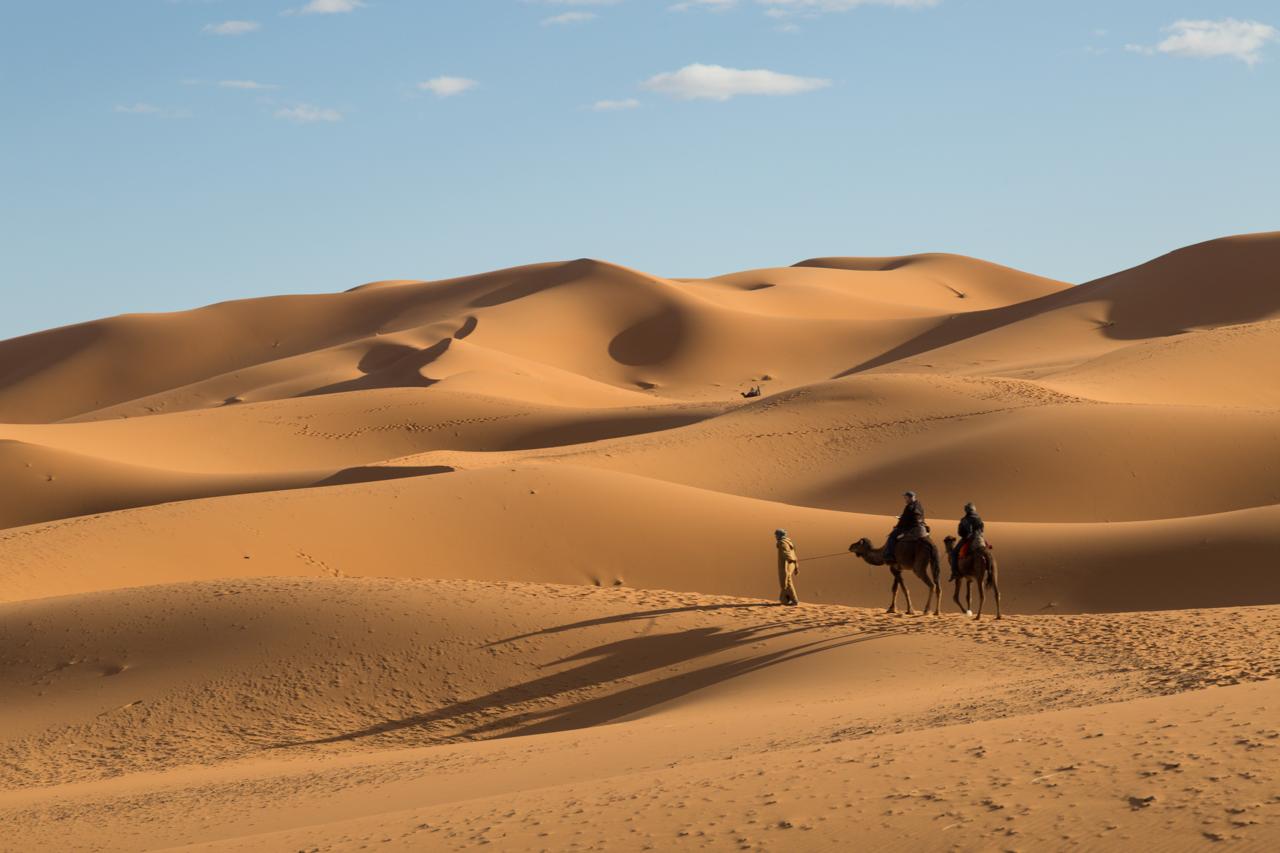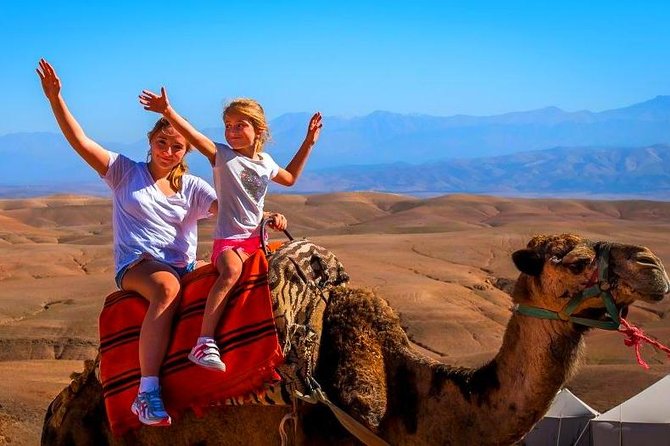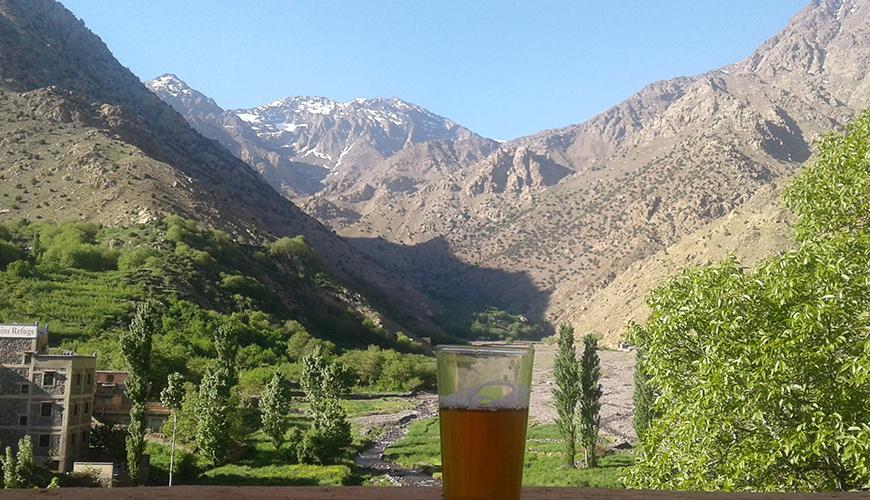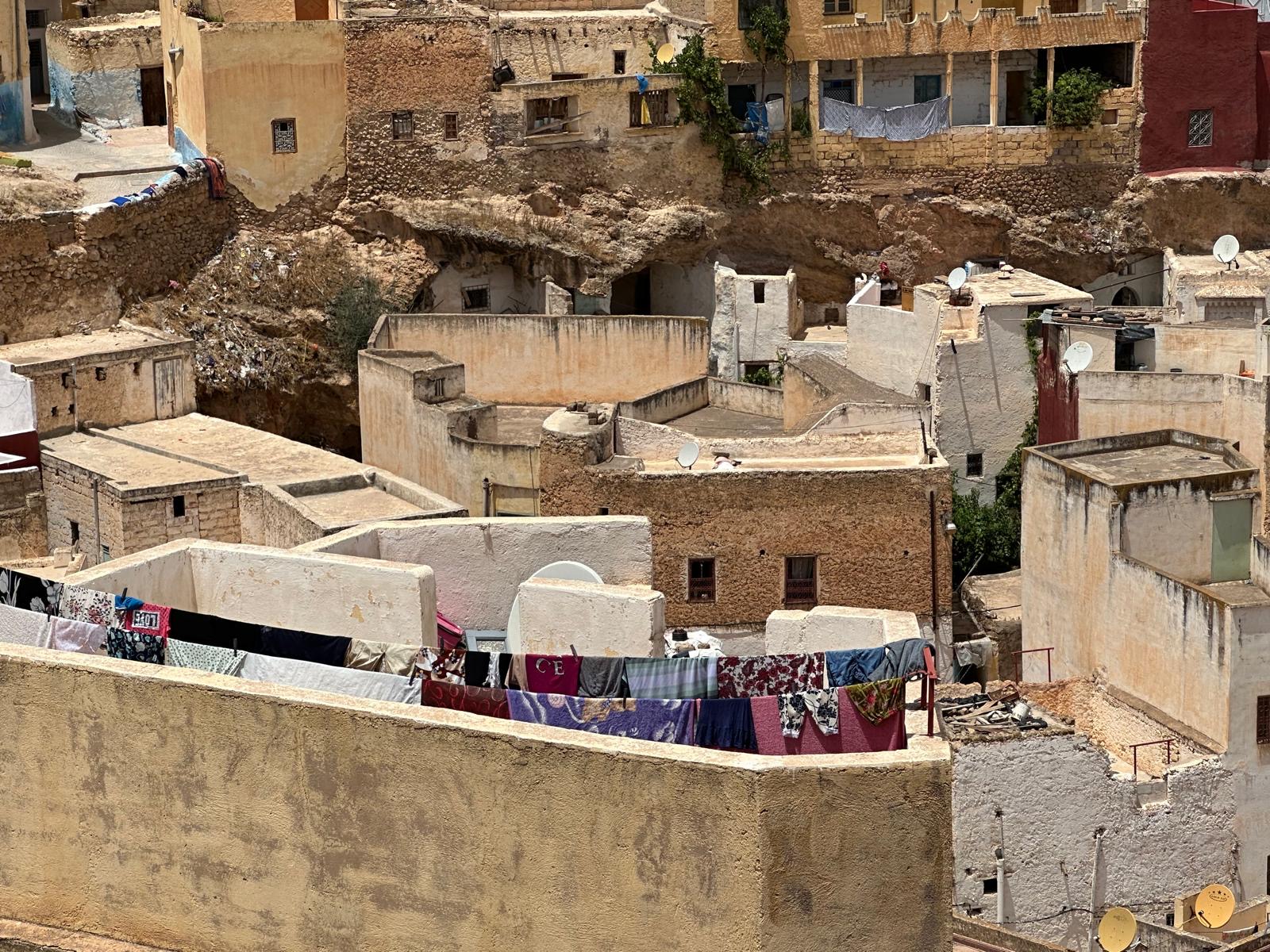Our blog

Medina marrakech
Marrakesh, also spelt Marrakech, (The Red City) known for its souks, spices, exotic scents,
the sound of the muezzin’s call the prayer, the snake charmers is pure Morocco, oriental and
mysterious. With all its traditional charm it is also offers art galleries, boutique hotels and
luxurious hammams.
As soon as you arrive in the royal city, you are surprised by the colour contrasts, the pink
walls of clay, the houses covered with bougainvillea, the view of the snowy peaks of the High
Atlas set against the backdrop of the vibrant blue sky. Marrakech is located at the foot of the
High Atlas Mountains in southwestern Morocco. Along with Meknes, Fes and Rabat,
Marrakesh is one of Morocco's royal cities. Founded in 1070, Marrakesh today has about 1.5
million inhabitants and is the capital of the province of the same name. Every traveler to
Morocco must visit this city at least once, even if it is just for a weekend. We, who live here
and love this city can show you its hidden gems, but should you wish to explore Marrakesh
yourself, we recommend you visit the following seven must see places.
1. The Koutoubia Mosque
Is the main symbolic landmark of Marrakech. The Koutoubia Mosque is the largest in
the city and was built in 1150, an engineering and architectural masterpiece of its
era. With a minaret of exceptional beauty which stands 65 meters tall, it is also the
oldest of the three great Almohad minarets left standing in the world. It’s location at
the edge of the medina is a remarkable sight.
2 The Medina and its Souks
Strolling through the Souks in the heart of Marrakech’s Medina is like diving into the
world of ‘A Thousand and One Nights’. To wander through the Souk’s huge labyrinth
of narrow and winding streets. The area is steeped in history and the culture of the
Moroccan people. The Souks are organized depending on the product that is
produced and sold: colorful fabrics, aromatic spices, terracotta tagines, handmade
rugs and wrought iron lanterns are all on offer for you to purchase. Remember,
haggling is an essential part of shopping in the souks.
3 Jamaa el Fna Square
The UNESCO World Heritage Site of Jamaa el Fna Square also known as ‘the Square
of the Deceased’ is the most visited tourist attractions in the city. The Square
constantly changes its appearance as morning turns into night. During the day
Jammaa el Fna Square is a lively open-air market, selling fruit juices, nuts, fresh fruits
where water sellers with traditional leather waterbags rub shoulders with snake
charmers, palm readers and henna tattoo artists. In the evening, the square fills with
dozens of footstalls offering Moroccan culinary specialties such as bubbling tajines,
fish, and even spiced snail broth. Join the locals for dinner at one of the tables
accompanied by Berber musicians for a memorable evening.
4 The Bahia Palace
Is located in the heart of the Medina, in the old Jewish quarter of Marrakech. The El
Bahia Palace was built between 1894 and 1900 for the concubines of Ahma Ibn
Moussa. The beautiful Alawite architecture of the palatial complex, contrasted with
spectacular gardens covers 8 hectares. The palace has 160 ornately decorated
rooms overlooking its many courtyards and gardens. The 4 wives and 24 concubines
all lived in the lavish interiors of the harem’s small salons. The Bahia Palace is one of
the most visited attractions in Morocco. The El Bahia Palace is still used today by the
Moroccan Royal Family on the rare occasion when they visit the city, but for the
most part, the palace is open to tourists.
Opening Times: 08.00 – 17.00 daily
Entrance fee: 70 Dirham per person
5 The Jardin Majorelle
This garden is situated near the center of the modern city (Gueliz). The French painter
Jacques Majorelle created his refuge in Marrakesh in 1924, purchasing a palm grove
where he had an Art Déco villa built and a botanical garden designed. The Jardin
Majorelle is home to botanical species hailing from all five continents, bougainvillea,
cypress, bamboo, jasmine, water lily, cactus, yucca, all in all over 300 plant species.
The garden also currently houses a Museum of Islamic art in what was Jacques
Majorelle’s workshop. Known now as the ‘Musée Berbère’ it showcases the rich
panorama of Morocco’s indigenous inhabitants, displaying some 600 artefacts. Well
worth a visit, even if you are not into plants. The villa and the garden became
renowned for the vivacious colours used by the painter in his decor. The celebrated
Majorelle blue immediately captivates the visitor; an intense, electric blue which has
since become famous as the colour used for the packaging of Gauloises cigarettes. In
1980 Yves St Laurent, the French fashion designer and his partner Pierre Bergé who
discovered the garden on their first visit in 1960, bought it to save it from a proposed
hotel complex development. They undertook restoration of the garden. In 2001, YSL
and Pierre Bergé decided to create the ‘Association Jardin Majorelle’ with the aim of
safeguarding the ecological, historical and cultural heritage represented by the Jardin
Majorelle.
It is highly recommended to book your tickets online:
www.tickets.jardinmajorelle.com
Opening Times: 8am – 6.30pm, last entry at 6pm
Entrance fee: 70 Dirhams per person, 30 Dirhams to enter the museum
6 The Ben Youssef Madrasa
The Ben Youssef Madrasa Islamic College is one of the most important sacred
monuments in Marrakesh. Situated within the Medina, its name originates from
Almoravid Sultan Ali Ibn Youssef, who reigned in Morocco from 1106-1142. This
madrasa was once the largest Islamic school in North Africa and is now an UNESCO
world heritage site. The Ben Youssef Madrasa is an architectural masterpiece. It
depicts the history of Moroccan art and a flourishing civilization steeped in history.
The extensive courtyard constitutes a wonderful example of Arab-Andalusian
architecture with its generous pool made of Carrara marble. The courtyard is only
accessible via the main entry vestibule at the north, or through a large arched portal
that opens to the prayer hall at the south. The luxurious domes of the vestibule are
supported by cedarwood. The exquisite décor and high walls distinguish this Madras
and still has the same appearance from its founding until present time.
Opening Times: 9am – 6.00pm
Entrance fee: 40 Dirhams per person
7 The Sahara Desert
An excursion to The Sahara Desert is a must when in Morocco:
Few places on earth can compare to The Sahara Desert, a natural wonder of vast
plains, sunbaked dunes of contrasting shades of gold. The traditional Bedouin
settlements and fertile luxurious oases dominate to the south and east of Morocco.
Hemmed in by The Atlas Mountain Range, the Sahara landscape is truly a unique
once in a life-time experience filled with adventure. Most people explore The Sahara
Desert by camel or in a modern air-conditioning jeep which is certainly exciting but
there are many more options of activities you can do in the desert: ride a quadbike,
take a sand bath, stargazing, sit around a campfire and watch the cooks prepare
traditional Moroccan fayre and BBQ with the bread baked in the sand, spot wildlife
and watch the sunset and sunrise. Sunsets and sunrises are beautiful in most corners
of the world, but there is something spectacular about the way the colors of the sky
paint the golden dunes of The Sahara. Just like stargazing, it is the silence
interspersed with the mysterious sounds of the desert as the day either ends or
begins that set the perfect atmosphere. Enjoy the drama of the reflecting light
played out at dawn across the vast sandy landscape.




